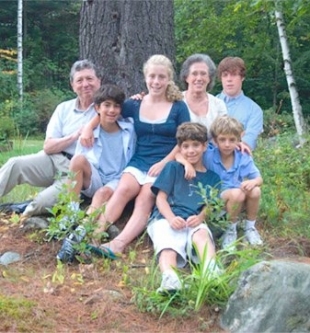Share
Of Teenagers and Whales

Yesterday evening, after my teenage granddaughter had finished her homework, we went at her request to a nearby mall. We drove, of course.
While she was hunting around for some new acquisition of the outlandish apparel teenagers relish these days, I sauntered idly around the shops. The stores are all chains common to malls across our country. She spent her time at two places I had never heard of, Rue 21 and Wet Seal, jam-packed with girls her age.
There was not a natural product among all the offerings as far as my eyes could see. Every item of apparel was constructed of a man-made fabric, mostly acrylic, some nylon. In the mall plaza where I then sat down to wait, a free-standing booth was selling wind-up toys, plastic one and all.
My granddaughter emerged with her purchases of a fake fur vest (acrylic) and animal-patterned tights (nylon).
The common thread (no pun intended) throughout the mall is petroleum. Both acrylic and nylon are manufactured from oil. Just as 98% of all manmade chemicals are. Acrylic was originally created by DuPont. Monsanto entered the picture when it developed a chemical process to keep acrylic from pilling.
What’s my point? These fabrics are (1) adding to an unthinking, wanton use of the fossil fuels that are causing global warming, and (2) made with toxic chemicals that eventually end up in our food, water, and air. And (3) made by the same companies produce the most oil-based polluting substances.
It is companies such as DuPont and Monsanto and the products they make – which we so avidly buy and buy and buy –that end up causing the chronic illnesses that beset one out of three of our children.
The mall we visited is called the Arsenal Mall, originally built to store weapons during World War II. In its re-use as a mall of mass consumption, it’s simply shifted its destructive role.
Eventually our consumer products along with unimaginably massive amounts of toxic chemicals find their way into lakes, rivers and seas. Their spread extends far beyond the island of floating garbage in the Pacific Ocean www.youtube.com/watch?v=z7rNYzSH-BA twice the size of Texas.
You have to read the new book, Eye of the Whale, by Douglas Carlton Abrams, to grasp the connection between the vast contamination of the oceans and its inhabitants and our damaged human condition. In this thriller in the tradition of John LeCarre (think The Constant Gardener), Abrams writes, “The level of toxic pollution in even the most remote locations and in sea life everywhere (is) staggering. Perhaps this whale was demonstrating the aberrant development and disease such contaminants were causing. Pollution was replacing the harpoon as the greatest threat to whales, but pollution, unlike the harpoon, was a danger not only to whales.”
The book follows a young scientist, an expert in humpback whale communication, as, piece by piece, she decodes a new whale song whose meaning she deciphers as “babies in danger.” She finds her own life threatened by commercial whalers, chemical companies and their lackeys in science, government, and the press, who need to keep these dangers out of the public eye. There’s nothing fictional at about such a cast of characters.
Abrams wraps his mastery of the scientific evidence --of the link between the poisoned environment and cancer, hermaphroditism, and a damaged immune system, for example –in a fast-paced plot with lots of heroes and villains and real tension about how the novel will end.
This book asks the same question that came to me as I watched the mall shoppers on their voracious hunt for acquisitions. It seems as if the way we live these days is killing us and the world around us. Aren’t there other ways to arrange a civilized life?
Can human nature live with nature?
--
Alice Shabecoff is the co-author with her husband Philip of Poisoned Profits: The Toxic Assault on our Children (Random House, 2008) where you will find real stories about children across the U.S. harmed by toxics in their daily lives, about the scientific evidence of how toxics work their harm, and about the companies and their lackeys, the same cast of characters responsible for harming children as well as whales.





